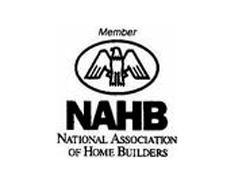Rising House Prices Spurring Home Building
Washington, DC, April 26, 2013 -- Buoyed by rising home prices throughout much of the nation, both single-family and multifamily housing starts are expected to post double-digit gains over last year in 2013, according to the National Association of Home Builders.
However, headwinds continue to hold back stronger growth as the housing recovery evolves, according to economists at NAHB’s Spring 2013 Construction Forecast Conference Webinar.
“The broadening housing expansion is evidenced by the NAHB/First American Improving Markets Index, which now lists 273 metros areas out of a universe of 361, or three-quarters of the metropolitan areas in the U.S.,” said NAHB Chief Economist David Crowe.
The recent surge is almost all due to improvements in house prices across a broader number of markets, he added. Home price increases became more solid and consistent in 2012, and the latest data shows a nearly 6 percent annual rate of home price appreciation on a national basis.
Growth in the housing sector is rising at a much faster pace than the overall economy during this phase of the recovery, Crowe added. The residential fixed investment component of GDP was up 17.5 percent in the fourth quarter of 2012 whereas total economic output only registered a 0.4 percent gain.
As demand for housing gradually picks up steam, supply chains for building materials, developed lots and skilled workers will take some time to re-establish themselves in the aftermath of the Great Recession.
Meanwhile, builders are feeling pinched by rising costs of key building components (prices of gypsum, softwood lumber and concrete are all above 90 percent of their housing boom peak), which is causing home construction costs to rise at a faster pace than appraised values, Crowe said.
Moreover, ongoing difficulties in obtaining construction credit, overly restrictive mortgage lending rules and uncertainty in Washington regarding the future of housing financial regulations and housing tax incentives, including the mortgage interest deduction and Low Income Housing Tax Credit, threaten to dampen consumer confidence and future housing demand.
Meanwhile, NAHB’s Multifamily Production Index, a leading indicator for the multifamily market, has jumped 38 points in the past four years and now stands at 54. For the past three quarters, the index has been above the critical tipping point of 50, where a reading of 50 means that an equal number of builders view conditions in the multifamily market as good and bad.
Multifamily starts are expected to rise to 334,000 units in 2013, up 35 percent from last year’s 247,000 level, bringing production back to the baseline level that is needed to keep the supply in balance with demand. Multifamily starts are anticipated to rise an additional 5 percent next year to 349,000 units.
The single-family market, which must make up the most ground to return to its 2000-2003 level of normal production (1.3 million units), continues to make steady gains. NAHB is forecasting 672,000 single-family housing starts in 2013, up 23 percent from the 534,000 units recorded last year. Single-family production is expected to rise an additional 28 percent in 2014, to 858,000 units.
